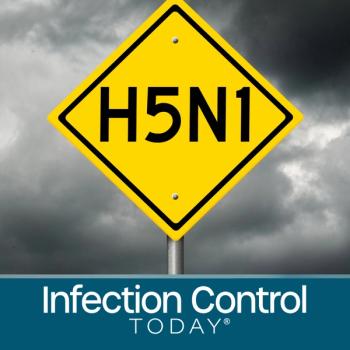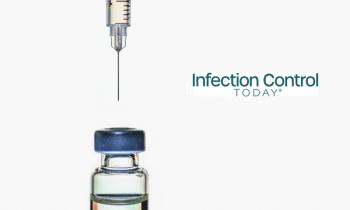
A Layered Approach Is Key to a Successful Infection Prevention Program
This content is sponsored by PDI.
Manual disinfection is an important component of keeping the environment clean; however, by itself, it has been proven to be inadequate. According to several studies, more than 50% of health care surfaces are not properly disinfected, leaving behind pathogens that increase the risk of infection by 39 – 353% for the next patient who enters the room.1 In fact, according to a study by Jefferson, et al, on average, only 25% of targeted surfaces in 71 operating rooms had been properly cleaned.2
The key to a successful infection prevention program, especially during a pandemic or outbreak, is to adhere to an integrated, layered approach. Combining stringent handwashing, manual cleaning and antibiotic stewardship, along with enhanced terminal disinfection, can help provide the cleanest environment possible.
Studies point to an integrated, bundled approach as an effective and efficient means for comprehensive infection prevention within a health care facility. For best results, as reported in the American Journal of Infection Control, health care facilities should establish strict cleaning protocols, including both manual cleaning and automated, total room decontamination technology, combined with extensive training and monitoring of staff.3
Evidence of the success of a bundled approach in the reducing prevalence of hospital-acquired infections (HAIs) can be seen in a study from UNC Health Care.4 Researchers there introduced a multidisciplinary team to address several areas, including:
· Diagnostic (testing) stewardship
· Isolation precautions
· Environmental cleaning and disinfection, including the use of Tru-D UVC disinfection
· Antimicrobial stewardship
· Hand hygiene
Over the course of approximately one year, the researchers saw improved testing stewardship, increased UVC disinfection at terminal clean, a reduction in prescriptions for antibiotics known to contribute to C. diffinfections, and sustained hand hygiene compliance at 90% or greater.
By implementing and monitoring these interventions, UNC Health Care saw a 42.7% reduction in its hospital-onset C. diffrates. HAI reduction requires a multifaceted approach, and this study showed that by including UVC in a package of interventions, it is possible to see dramatic reductions in infections such as C. diff.
During the COVID-19 pandemic, hospitals are realizing that now, more than ever, a germ-free environment is crucial for maintaining the safety and health of both patients and staff. Sarasota Memorial Health System has added three Tru-D devices to its fleet of disinfection robots in order to treat more rooms and areas and to help to stop the spread of infectious diseases. Similarly, Jupiter Medical Center is leveraging the use of Tru-D, in addition to implementing the necessary personal protective equipment (PPE), to protect frontline caregivers.
It is of note that having Tru-D available in close proximity to the areas it will be most used cuts down on the amount of time it takes to complete the disinfection process. If EVS staff do not need to spend a lot of time retrieving a device and bringing it to the area to be disinfected, they are able to disinfect more rooms and spaces in the same amount of time. It also reduces frustration and smooths logistics within EVS workflow.
Purchasing a UVC disinfection device will not solve the problem with germs and pathogens on its own. A multidisciplinary approach that includes proper manual cleaning, stringent handwashing and a commitment to antibiotic stewardship, together with enhanced disinfection with UVC, will lead to a cleaner and safer patient environment.
Alice Brewer, MPH, CIC is the director of clinical affairs for Tru-D SmartUVC.
References:
1. Weber, D., et al (2016). ‘No touch’ technologies for environmental decontamina-tion: focus on ultraviolet devices and hydrogen peroxide systems. Current Opinion in Infectious Diseases, 29:000-000.
2. Jefferson, J., et al (2011). A novel technique for identifying opportunities to im-prove environmental hygiene in the operating room. AORN Journal, 93 (3), 358-64.
3. Rutala WA, Weber DJ. Best practices for disinfection of noncritical environmental surfaces and equipment in health care facilities: A bundle approach. Am J Infect Control. 2019;47:A96-A105
4. Schultz, K., et al. (2018) Preventable Patient Harm: a Multidisciplinary, Bundled Ap-proach to Reducing Clostridium difficile Infections While Using a Glutamate Dehy-drogenase/Toxin Immunochromatographic Assay/Nucleic Acid Amplification Test Di-agnostic Algorithm. Journal of Clinical Microbiology. 56 (9) e00625-18.
Newsletter
Stay prepared and protected with Infection Control Today's newsletter, delivering essential updates, best practices, and expert insights for infection preventionists.






